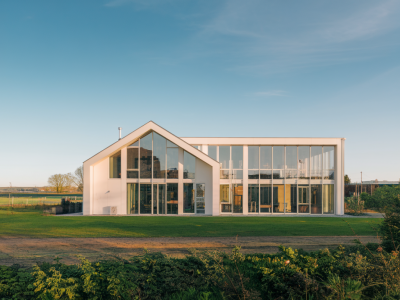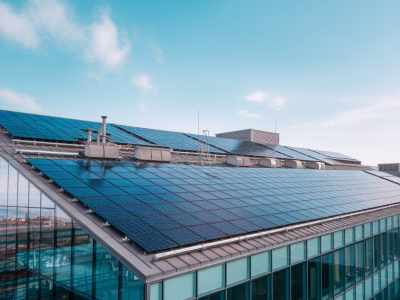
Access to electricity is a basic need in today’s world, yet millions of people in rural and remote areas still lack it. Traditional grid extension is often too costly or logistically challenging for these communities. Enter community-led microgrids—a transformative concept that’s redefining how we approach rural electrification. By leveraging renewable energy sources and placing power directly in the hands of the people, microgrids are paving the way for sustainable, reliable, and independent energy systems.
What Are Community-Led Microgrids?
A microgrid is a localized energy system capable of operating independently or in connection with a larger conventional grid. What makes community-led microgrids unique is the ownership and decision-making process—these systems are designed and operated by the very communities they serve. Localized efforts mean that microgrid systems can be tailored to the specific energy needs and resources of a region, ensuring a more efficient and sustainable solution.
At their core, community-led microgrids harness renewable energy sources like solar panels, wind turbines, or even small-scale hydropower. Combined with modern energy storage systems—such as lithium-ion batteries or alternative battery technologies—these microgrids are poised to reliably supply electricity to areas that have gone decades without power.
How Are These Microgrids Empowering Rural Communities?
The benefits of community-led microgrids go well beyond access to electricity. Here’s how they’re impacting the lives of rural populations:
- Economic Empowerment: Electrified rural areas can develop local businesses, support agriculture with irrigation systems, and create job opportunities related to the maintenance and operation of the grid.
- Improved Health and Education: Reliable electricity opens up possibilities for better healthcare, including refrigeration for vaccines and illuminated clinics. Schools can also function beyond daylight hours, enabling children and adults alike to pursue education.
- Resilience and Sustainability: By leveraging local renewable resources, microgrids reduce dependence on external energy supplies and fossil fuels, all while minimizing carbon footprints.
- Community Autonomy: Ownership of energy systems allows communities to control costs, monitor usage, and collectively decide how to grow their energy networks for future needs.
Key Innovations Driving Microgrid Success
Modern technology plays a vital role in making community-led microgrids feasible and scalable. One emerging trend is the adoption of smart grid technology that allows remote monitoring, real-time energy analytics, and demand-response systems to ensure stability. Companies like Schneider Electric and Siemens are developing accessible solutions tailored for such initiatives, helping communities manage their microgrids effectively.
Another breakthrough is in battery technology. Efficient and affordable energy storage is critical for ensuring a constant supply, especially since renewable energy sources like solar and wind are intermittent by nature. Innovations like Tesla’s Powerwall and community-scale energy storage units from companies like Fluence are paving the way for long-term reliability of microgrids.
Why Local Leadership Matters
One of the most inspiring aspects of community-led microgrids is the emphasis on local leadership. Unlike top-down energy solutions imposed by external organizations, these microgrids are designed, funded, and managed by local stakeholders. This bottom-up approach fosters a sense of ownership and responsibility among community members, which in turn encourages better maintenance and long-term sustainability.
Local engagement also empowers women, who often bear the brunt of energy poverty in many rural communities. In some programs, like that of Barefoot College in India, women are trained as solar engineers, fueling gender empowerment while contributing to the technical backbone of these energy systems.
Cost-Effective and Scalable Solutions
One common question is, “How affordable are these microgrids, and can they work on a larger scale?” Luckily, the costs of renewable energy technology have dropped significantly over the past decade. Solar panels, in particular, are now more affordable than ever, and maintenance for microgrids is manageable when communities are trained in basic upkeep.
Furthermore, there’s a growing interest among governments, NGOs, and private investors to support microgrid projects. For instance, the World Bank and organizations like Power Africa have funded initiatives to bring microgrid solutions to remote regions in countries like Kenya, Nigeria, and India. These success stories show that community-led microgrids aren’t just feasible—they have the potential to scale globally.
In countries like Bangladesh, the implementation of solar home systems has already energized millions of off-grid households. The next logical step is to interconnect such systems into community-level microgrids, a strategy that has shown immense promise in Southeast Asia.
Challenges and the Road Ahead
Of course, community-led microgrids are not without their challenges. Financing remains a significant barrier, especially for the initial capital investment required to set up the system. Additionally, ensuring the long-term viability of these projects requires comprehensive training programs and continuous technical support.
However, the future looks bright. Innovations in energy technology—combined with philanthropic and governmental backing—are shrinking these barriers. There’s also a growing recognition of energy justice, which prioritizes equitable access to sustainable energy as a global imperative. By addressing these challenges head-on, there is no doubt that community-led microgrids can become a cornerstone of rural electrification efforts worldwide.
Community-led microgrids represent a powerful blend of technology, sustainability, and human empowerment. They aren’t merely providing electricity—they’re igniting transformations, uplifting rural areas, and proving that when communities stand at the forefront of energy solutions, the possibilities are limitless.

